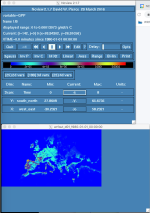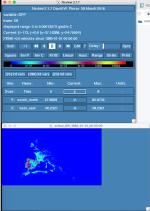wrf_alessandro
Member
Hi All,
I am facing an issues with Noah-MP: when I set the history frequency to 1 day, the variables GPP and NPP are always 0, while when the history frequency is 3h or 6h they are correctly saved and displayed in wrfout. Any suggestion on how to fix this bug keeping the history frequency at 1 day?
Best,
Alessandro
I am facing an issues with Noah-MP: when I set the history frequency to 1 day, the variables GPP and NPP are always 0, while when the history frequency is 3h or 6h they are correctly saved and displayed in wrfout. Any suggestion on how to fix this bug keeping the history frequency at 1 day?
Best,
Alessandro


